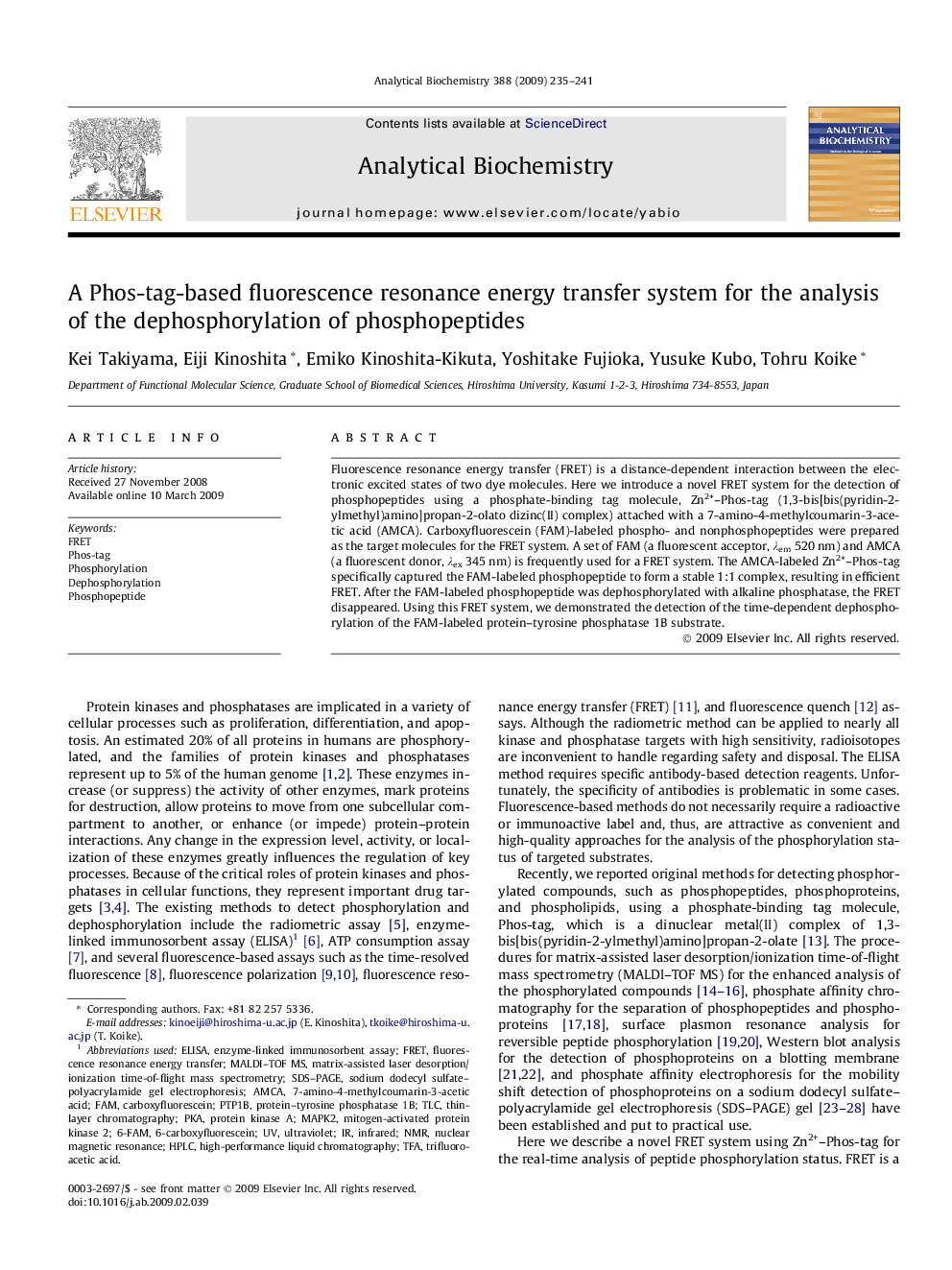| Article ID | Journal | Published Year | Pages | File Type |
|---|---|---|---|---|
| 1177065 | Analytical Biochemistry | 2009 | 7 Pages |
Fluorescence resonance energy transfer (FRET) is a distance-dependent interaction between the electronic excited states of two dye molecules. Here we introduce a novel FRET system for the detection of phosphopeptides using a phosphate-binding tag molecule, Zn2+–Phos-tag (1,3-bis[bis(pyridin-2-ylmethyl)amino]propan-2-olato dizinc(II) complex) attached with a 7-amino-4-methylcoumarin-3-acetic acid (AMCA). Carboxyfluorescein (FAM)-labeled phospho- and nonphosphopeptides were prepared as the target molecules for the FRET system. A set of FAM (a fluorescent acceptor, λem 520 nm) and AMCA (a fluorescent donor, λex 345 nm) is frequently used for a FRET system. The AMCA-labeled Zn2+–Phos-tag specifically captured the FAM-labeled phosphopeptide to form a stable 1:1 complex, resulting in efficient FRET. After the FAM-labeled phosphopeptide was dephosphorylated with alkaline phosphatase, the FRET disappeared. Using this FRET system, we demonstrated the detection of the time-dependent dephosphorylation of the FAM-labeled protein–tyrosine phosphatase 1B substrate.
